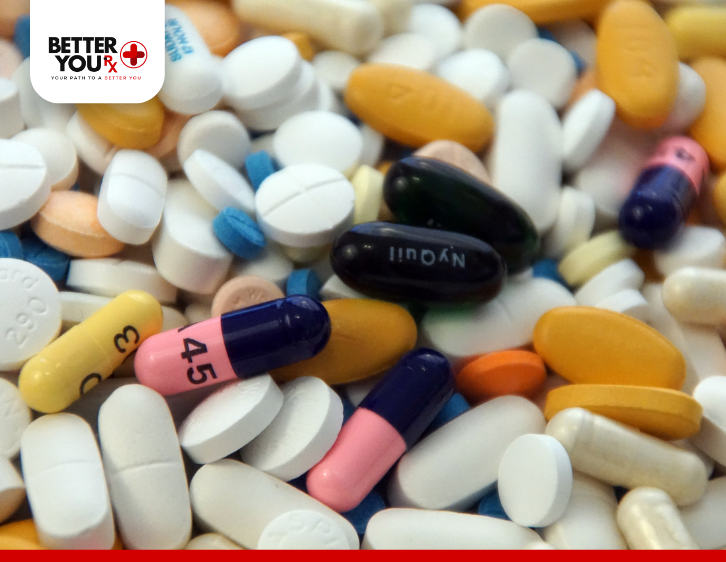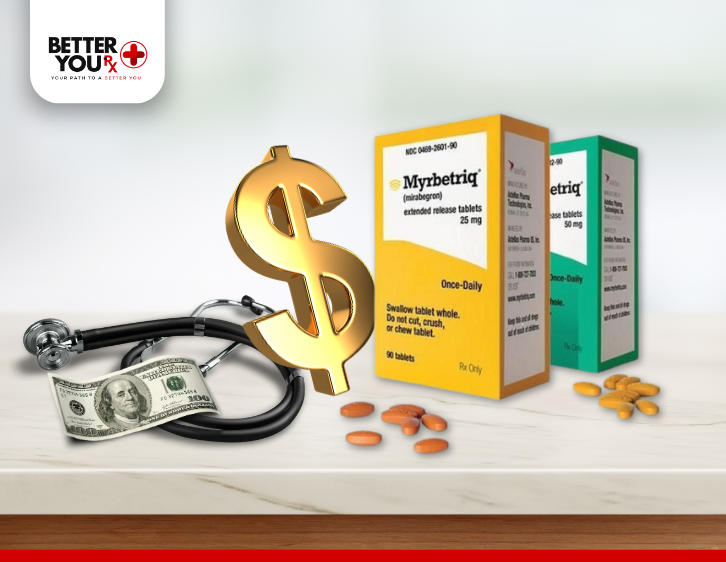Why is Myrbetriq So Expensive? A Look at Its Cost and Common Side Effects
Myrbetriq (generic name: mirabegron) has become a go-to medication for individuals suffering from overactive bladder (OAB). Known for its ability to effectively relax bladder muscles and reduce symptoms like frequent urination and urgency, Myrbetriq offers relief for those dealing with the discomfort and inconvenience of OAB. Despite its effectiveness, many patients are taken aback by its high price, making it inaccessible for some, especially without insurance.
This article explores why Myrbetriq is so expensive, delving into factors such as patent protection, research and development (R&D) costs, and market dynamics. Additionally, we’ll cover the most common side effects associated with Myrbetriq and potential alternatives for patients looking for more affordable treatment options.
What is Myrbetriq?
Myrbetriq is a prescription medication primarily used to treat symptoms of overactive bladder (OAB), such as frequent urination, urgency, and incontinence. Unlike traditional OAB treatments, which rely on anticholinergics to block certain nerve signals, Myrbetriq works by activating beta-3 adrenergic receptors in the bladder. This process relaxes the bladder muscle, allowing it to store more urine and reducing the number of bathroom trips.
The drug’s innovative mechanism of action has made it an attractive alternative to older medications. Anticholinergics, for example, are known for their side effects such as dry mouth and constipation, which can be troublesome for patients. In contrast, Myrbetriq offers a different approach with a generally better side effect profile, making it a preferred choice for many individuals with OAB.
Why is Myrbetriq So Expensive?
Myrbetriq’s high price is a common complaint among patients, especially those who are uninsured or have limited insurance coverage. There are several key reasons why this medication carries such a hefty price tag.
1. Lack of Generic Alternatives

One of the primary reasons Myrbetriq remains expensive is the lack of generic alternatives. The drug is still under patent protection, which gives its manufacturer, Astellas Pharma, exclusive rights to produce and sell it. Until the patent expires, other companies cannot legally produce cheaper, generic versions of the drug. This exclusivity allows Astellas to set high prices, as there is no competition driving the price down.
2. Research and Development Costs

Developing a new medication is an incredibly expensive and time-consuming process. It can take years of research, preclinical testing, and clinical trials before a drug reaches the market. According to industry estimates, it costs pharmaceutical companies between $1 billion and $2.5 billion to develop a single drug, including the cost of failed drugs that never make it to market. These R&D costs are often passed on to consumers in the form of high prices for new drugs, including Myrbetriq.
3. Market Demand and Specialty Drug Status
Myrbetriq is considered a specialty drug, which means it is used to treat chronic or complex conditions like OAB. Specialty drugs are often priced higher due to their targeted nature and the significant research that goes into developing them. Additionally, there is a growing demand for more effective OAB treatments, which further justifies the premium pricing for Myrbetriq.
4. Limited Competition
Another factor driving the cost of Myrbetriq is the limited competition in the OAB market. While there are other medications available, Myrbetriq is one of the few that offers a non-anticholinergic option for patients. This limited competition allows Astellas to maintain a high price point without the threat of being undercut by other brands or generic options.
5. Insurance Coverage and Out-of-Pocket Costs
Even with insurance, Myrbetriq can be expensive. Many insurance plans categorize Myrbetriq as a tier 3 or specialty drug, meaning patients often face high co-pays or coinsurance fees. Additionally, some insurance companies may require prior authorization, making it harder for patients to get the medication covered. For those without insurance, out-of-pocket costs for Myrbetriq can exceed $400 per month, making it unaffordable for many.
What Are the Most Common Side Effects of Myrbetriq?
While Myrbetriq is effective for many people with OAB, it’s important to be aware of the potential side effects that can occur with its use. These side effects can range from mild to more severe, depending on the individual.
1. Cardiovascular Side Effects
One of the most notable side effects of Myrbetriq is its potential to increase blood pressure. Because Myrbetriq works on adrenergic receptors, it can cause blood vessels to tighten, leading to elevated blood pressure in some patients. For individuals with preexisting hypertension, this side effect could be a concern and requires close monitoring by a healthcare provider. Regular blood pressure checks are recommended while using the medication.
2. Urinary Tract Infections (UTIs)
Another common side effect of Myrbetriq is an increased risk of urinary tract infections (UTIs). Since the drug affects bladder function, it can sometimes lead to incomplete bladder emptying, which in turn increases the likelihood of bacterial growth in the urinary tract. Patients who experience UTI symptoms, such as pain or burning during urination, should contact their doctor for treatment and management options.
3. Gastrointestinal Issues
Myrbetriq can also cause gastrointestinal side effects, including constipation and diarrhea. These side effects tend to be mild but can be bothersome for some patients. Adjusting one’s diet, drinking plenty of water, and staying physically active can help manage these issues. In more severe cases, your healthcare provider may adjust the dosage or recommend another treatment.
4. Other Possible Side Effects
Additional side effects reported by patients include:
- Headaches
- Dizziness
- Dry mouth
- Fatigue
These side effects are generally mild and tend to lessen over time as the body adjusts to the medication.
5. Rare but Serious Side Effects

In rare cases, Myrbetriq can cause serious side effects, such as severe allergic reactions or urinary retention. If a patient experiences difficulty breathing, swelling of the face or throat, or an inability to urinate, they should seek immediate medical attention. Though these reactions are rare, it’s important for patients to be aware of the warning signs and to consult their doctor if they have concerns.
Alternatives to Myrbetriq for Overactive Bladder
For patients who cannot afford Myrbetriq or who experience severe side effects, there are several alternatives available.
1. Anticholinergics
The most common alternatives to Myrbetriq are anticholinergic medications, such as oxybutynin (Ditropan) and tolterodine (Detrol). These drugs work by blocking nerve signals that cause bladder muscle contractions, helping to reduce OAB symptoms. While effective, they often come with side effects like dry mouth and constipation.
2. Lifestyle Changes
In addition to medication, lifestyle changes can be an effective way to manage OAB. Bladder training, which involves scheduling bathroom trips and gradually increasing the time between visits, can help improve bladder control. Dietary adjustments, such as reducing caffeine and alcohol intake, can also reduce the severity of OAB symptoms.
3. Other OAB Medications
Other medications, such as Vesicare (solifenacin) and Toviaz (fesoterodine), can also be used to treat OAB. These medications are similar to anticholinergics but may have different side effect profiles, making them a better option for some patients.
Conclusion
Myrbetriq is a highly effective treatment for overactive bladder, offering a unique approach to managing symptoms with fewer side effects than traditional OAB medications. However, its high cost, driven by patent protections, R&D expenses, and market dynamics, makes it unaffordable for many patients, particularly those without adequate insurance coverage.
While Myrbetriq provides significant benefits, patients should be aware of potential side effects, including increased blood pressure and urinary tract infections. For those looking for more affordable alternatives, anticholinergics or lifestyle changes may provide relief.
If you’re considering Myrbetriq for overactive bladder management but are concerned about the cost, Better You Rx can help. We specialize in providing access to Myrbetriq and other prescription medications at competitive prices, ensuring that you get the treatment you need without breaking the bank. With Better You Rx, you can explore savings options and enjoy personalized support tailored to your health needs. Talk to your healthcare provider about the best treatment plan for you, and let Better You Rx help you manage your OAB effectively and affordably.









